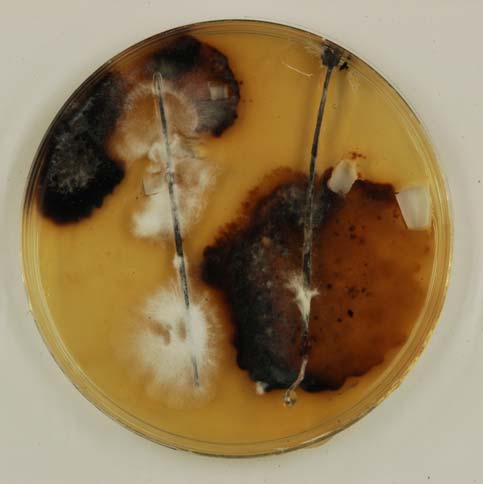PESTS AND DISEASES OF FORESTRY IN NEW ZEALAND
All you wanted to know about induced resistance in trees
Scion is the leading provider of forest-related knowledge in New Zealand
Formerly known as the Forest Research Institute, Scion has been a leader in research relating to forest health for over 50 years. The Rotorua-based Crown Research Institute continues to provide science that will protect all forests from damage caused by insect pests, pathogens and weeds. The information presented below arises from these research activities.
From Forest Health News 206, June 2010.
As part of Scion’s research programme on induced resistance, supported by capability funding, a review of induced resistance to pests and pathogens in trees was written. This review has recently been published in New Phytologist 1.
The review summarises findings from studies on induced resistance in trees, describes the mechanisms underlying induced resistance and discusses the large knowledge gaps that need to be addressed if the potential offered by the application of induced resistance in forests is to be harnessed. This article summarises the main points of the review, with particular reference to conifers and plantation forestry.

Trees have evolved diverse defence strategies to overcome insect and pathogen attack. They include multiple defences that impede access, deter or kill insects and inhibit or exclude pathogens by physical or chemical processes. Active, or constitutive, defences present the first line of defence and when breached induced defences are triggered. These induced defences can be categorised into five mechanisms, each of which can contribute to induced resistance. A tree response may include a combination of these mechanisms, modified by biotic and abiotic factors. The five categories of induced defence mechanisms are chemical (i.e. phenolic compounds, alkaloids) and protein based defences (i.e. oxidative enzymes, proteinase inhibitors), anatomical defences (mechanical barriers), ecological or indirect defences (attraction of the pest’s natural enemies), and civilian defences (reallocation of resources to growth – i.e. tolerance).
Induced resistance can occur at the site of attack, in the distal parts of the plant, or throughout the plant (systemic response). There are at least seven types of systemic induced resistance, the most well known to New Zealand forestry is induced systemic resistance that may be activated by colonisation of plant roots by plant growth promoting rhizobacteria, or fungi such as Trichoderma, Penicillium, or Phoma. For instance, the rhizobacteria Bacillus pumilus and Serratia marcescens induced systemic resistance to fusiform rust caused by Cronartium quercum f. sp. fusiforme on Pinus taeda. Examples of systemic induced resistance in conifers include a demonstrated effect against the pitch canker pathogen Fusarium circinatum in Pinus radiata in California. Young Pinus nigra trees inoculated in the stem with Diplodia pinea and the less aggressive D. scrobiculata became more resistant to subsequent inoculations in the stem or branches with D. pinea.
Fungal endophytes have been shown to confer host resistance in several tree species. Endophytes from P. monticola were effective at increasing the survival from attack by Cronartium ribicola, the cause of white pine blister rust. Inoculation of leaves with endophytes isolated from leaves of infected but disease free cocoa trees significantly reduced leaf dieback and death when challenged with a pathogenic foliar Phytophthora sp.
Induced resistance, obviously, must be activated by a signal generated as a consequence of attack. The pathways by which the signal is transmitted through the plant appear to be mediated by jasmonic acid, salicylic acid, and enthylene. These are commonly known as elicitors.
In pines, elicitors or signalling molecules have been shown to increase P. radiata resistance to artificial inoculation with F. circinatum, increase resistance to D. pinea and increase P. sylvestris resistance to the pine weevil Hylobius abietis.
Some compounds combine the effect of direct action on the pest or pathogen plus induced response from the plant. The imidacloprids Admire® and Confidor® are examples, as are jasmonates and phosphonates (i.e. Fosphite® and Agriphos®).
The application of induced resistance mechanisms can have its drawbacks. It is possible to obtain a negative response and systemic induced susceptibility has been reported in herbaceous plants and trees. Basal stem inoculation with the butt rot pathogen Heterobasidion annosum induced susceptibility to D. pinea shoot dieback of P. pinea. Inoculation of P. nigra with D. pinea resulted in resistance of stem tissues but increased susceptibility of shoot tips to D. pinea. The trade-off between disease resistance and the high cost of defence activation needs to be considered, where resources that could have been allocated to growth are diverted to defence. Some studies have shown that application of methyl jasmonate reduced growth compared to untreated controls.
Induced resistance does not offer complete control and will have to be deployed in a manner that considers environmental factors, the pest or pathogen and the risk of making the host more susceptible to attack. Nevertheless, the authors conclude that results from recent studies are highly encouraging and suggest that using induced resistance as a future management option is a plausible goal.
Lindsay Bulman
1 Eyles A, Bonello P, Ganley R, Mohammed C. 2010. Induced resistance to pests and pathogens in trees. New Phytologist
185: 893-908.
This information is intended for general interest only. It is not intended to be a substitute for specific specialist advice on any matter and should not be relied on for that purpose. Scion will not be liable for any direct, indirect, incidental, special, consequential or exemplary damages, loss of profits, or any other intangible losses that result from using the information provided on this site.
(Scion is the trading name of the New Zealand Forest Research Institute Limited.)



